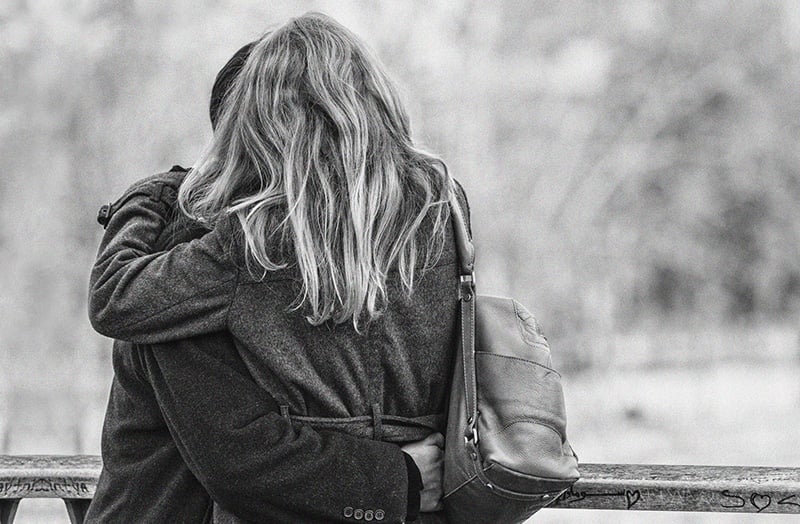
A round a year ago I discovered a term that I now love and investigate nearly daily: rewilding.
I was watching a TED Talk by British writer and activist George Monbiot who is the author of the (very recommendable) book Feral. When you look up rewilding, the definition goes somewhat like this: rewilding means to restore an area of land to its natural uncultivated state or to a wild state. As suggested above, perhaps rewilding can also concern the aesthetic experience, or can relate to the nurturing of an uncultivated side of human nature.
Monbiot initiates his explanation of rewilding by talking about the effects of the 1995 reintroduction of wolves in the Yellowstone National Park in the US.
The park was suffering from an increase of deer because there were no animals to hunt them, and as a result a large part of the diverse animal life and vegetation had been reduced.
When the wolves were reintroduced the first visible effect was, as intended, that they started killing some of the deer in the park. However, slowly something else started happening as well. As the deer were hunted by the wolves, they moved away from the valleys where they were vulnerable and could easily get caught, which resulted in the bare valleys quickly turning into forests with a diversity of trees and other plants.
Because of this, birds started to move in, the number of beavers started to increase, and the dams the beavers built in the valleys created habitats for otters, muskrats, ducks, fish, and reptiles.
Furthermore, the wolves kept the population of coyotes down, which resulted in the number of rabbits and mice increasing, which was followed by an increase in the number of hawks, foxes, and badgers. Moreover, the bear population began to rise; probably because of the berries that were growing on all the new trees in the valleys.
The wolves also changed the behavior of the rivers. More pools formed, and more narrow streams cropped up; all of which is great for diverse wildlife. The reason for the changes was that the regenerating forests stabilised the banks of the rivers, helping reduce mudslides.
Conclusively, the small number of wolves that were reintroduced to the park didn’t only transform its ecosystem radically, they also changed its physical geography. They helped bring it back to its natural state, which allowed animals to shape it and for the diversity that is necessary in order to foster resilience to arise.
The Yellowstone wolf story highlights an important point: aiming for everything and everyone being homogeneous is not a resilient, sustainable way of life — no matter how comfortable, safe, and reassuring this might seem. Allowing for and fostering diversity is, and this also applies to aesthetics.
In my birth-country Denmark, wolves have been extinct for a very long time, but around five years ago they were suddenly seen in the countryside of the mid- and Northwestern part of the country. Many residents felt uncomfortable and scared. Even though the number of wolves spotted was extremely low — somewhere between five and ten — and despite the fact that in Denmark’s neighbour country, Germany, wolves have lived freely since the year 2000 without any registered attacks on humans.
The wolf-discussion filled up the news for a while, and there were stories of sheep being eaten by wolves during the night.
Divisions grew for and against the wolves with families in the areas where the wolves were spotted being afraid to let their children play outside and of walking their dogs.
In June 2018 it became legal in Denmark to shoot wolves that are considered a problem. Problematic wolves are defined as:
- wolves that are not naturally aversive near people
- wolves that prey on farm animals
- wolves that attack dogs
- wolves that are dangerous to humans
Obviously, it is uncomfortable to feel threatened, and particularly to feel that your children could be in danger. However, wolves and other wild carnivores and humans have lived side by side for centuries, and the wolf is an original part of not only the Danish, but the European nature. As the Danish Nature Association points out, wolves are natural foresters—as also demonstrated in the Yellowstone Park example—and they fill out a void in the Northern European biosphere, which hasn’t contained large predators for over two hundred years. The wolf is also an endangered species.
Rewilding nature involves bringing back some of the missing plants and animals to a region, and then stepping back and allowing for nature to develop its varied magnificence. It is a way of helping nature find its own way. It is a way of letting go of control and of our human need to cultivate and tame nature—to allow for diversity to flourish.
In Monbiot’s TED talk he starts out by talking about how he, as a young man, spent six years on a wild adventure in the tropics, and how he, after returning to England, found himself ecologically bored, and quickly longed for a richer and rawer life.
Ecologically bored? I pondered this term for a while. What does it mean to be ecologically bored? Or rather, what does it entail?
When I think of this term, I think of the dullness of experiencing only one, homogenous, tame kind of nature; of never being exposed to vast, wild nature; never experiencing the magnificence of planting seeds and watching them grow; never getting one’s hands dirty from soil or picking one’s own food; of never swimming in the rain or being outside during a thunderstorm.
Being ecologically bored means that our instincts are dormant and sedated. In our late-modern, developed world, being able to make rational choices and act in a cultivated, normal, and civilised manner is celebrated, rather than adhering to natural instincts and intuition.
Rewilding one’s life does not necessarily mean moving out into the woods to engage in an off-grid lifestyle a la Thoreau’s life in the woods. Rewilding is a mindset, and it is closely connected to freedom. Not freedom in the way we tend think of it as a part of our cultural assumptions, as Monbiot rightfully points out — freedom to develop one’s business, carry guns, say whatever we want, or to believe in whatever or whoever we want.
No, the wild kind of freedom is related to our inner wildness; to listening to our intuition and our instincts, and to going against the societal and cultural norms if necessary, or if they deep down feel wrong.
Rewilding can hence be closely connected to the act of civil disobedience.
…
Let’s connect! https://www.instagram.com/the_immaterialist/
—
This post was previously published on medium.com.
***
All Premium Members get to view The Good Men Project with NO ADS. Need more info? A complete list of benefits is here.
 Compliments Men Want to Hear More Often Compliments Men Want to Hear More Often |
 Relationships Aren’t Easy, But They’re Worth It Relationships Aren’t Easy, But They’re Worth It |
 The One Thing Men Want More Than Sex The One Thing Men Want More Than Sex |
 ..A Man’s Kiss Tells You Everything ..A Man’s Kiss Tells You Everything |
—–
Photo credit: Thomas Bonometti on Unsplash
The post Rewilding appeared first on The Good Men Project.


